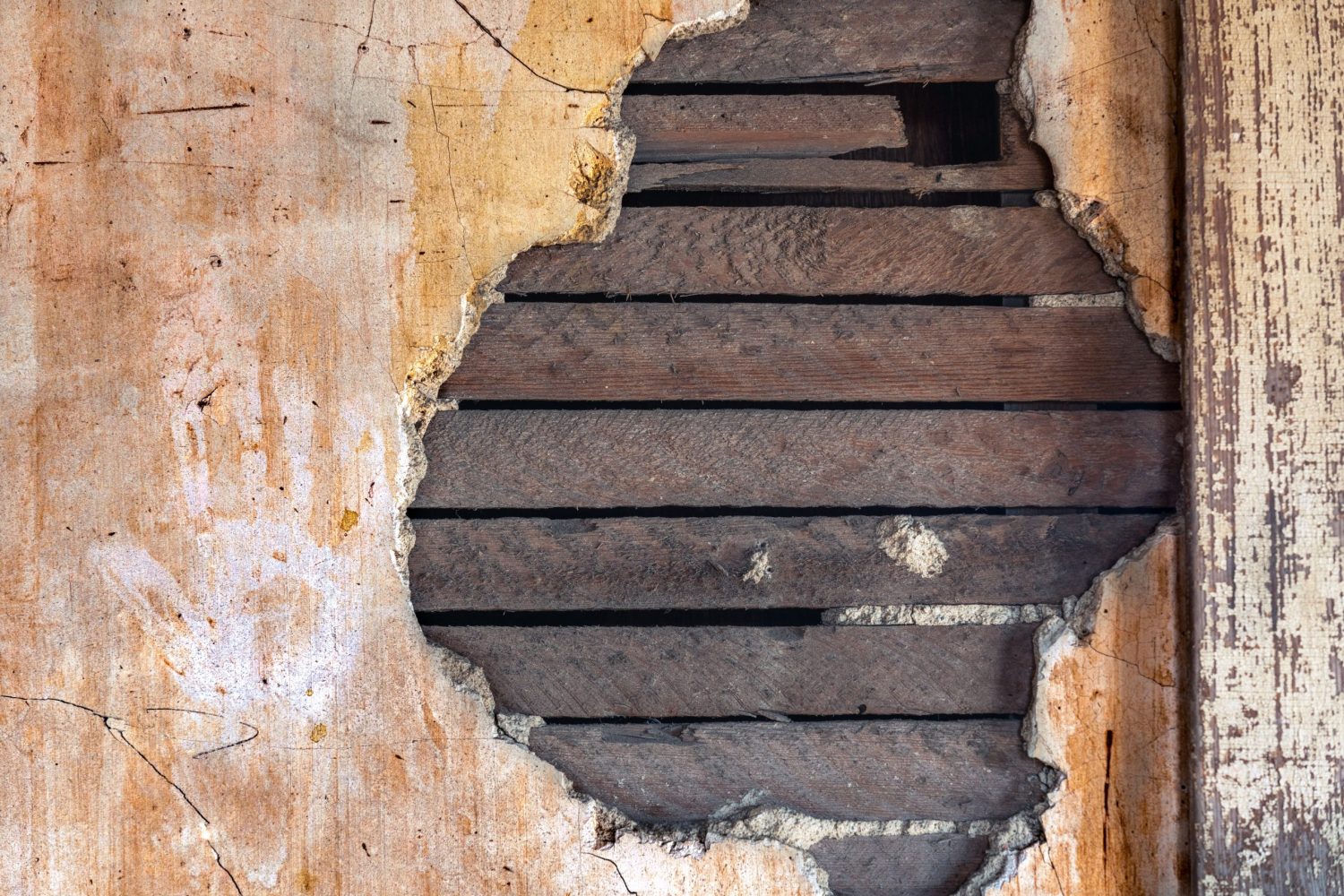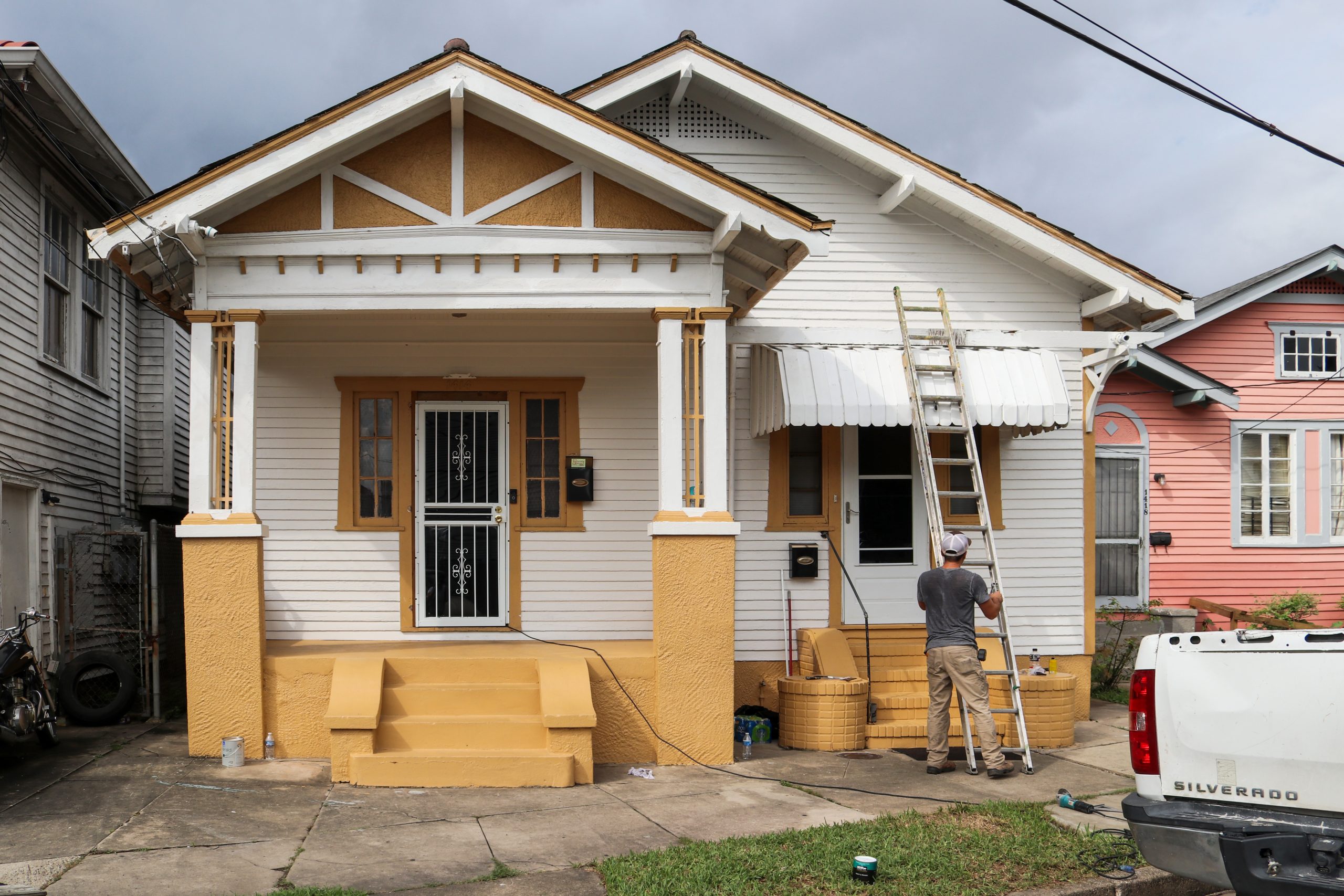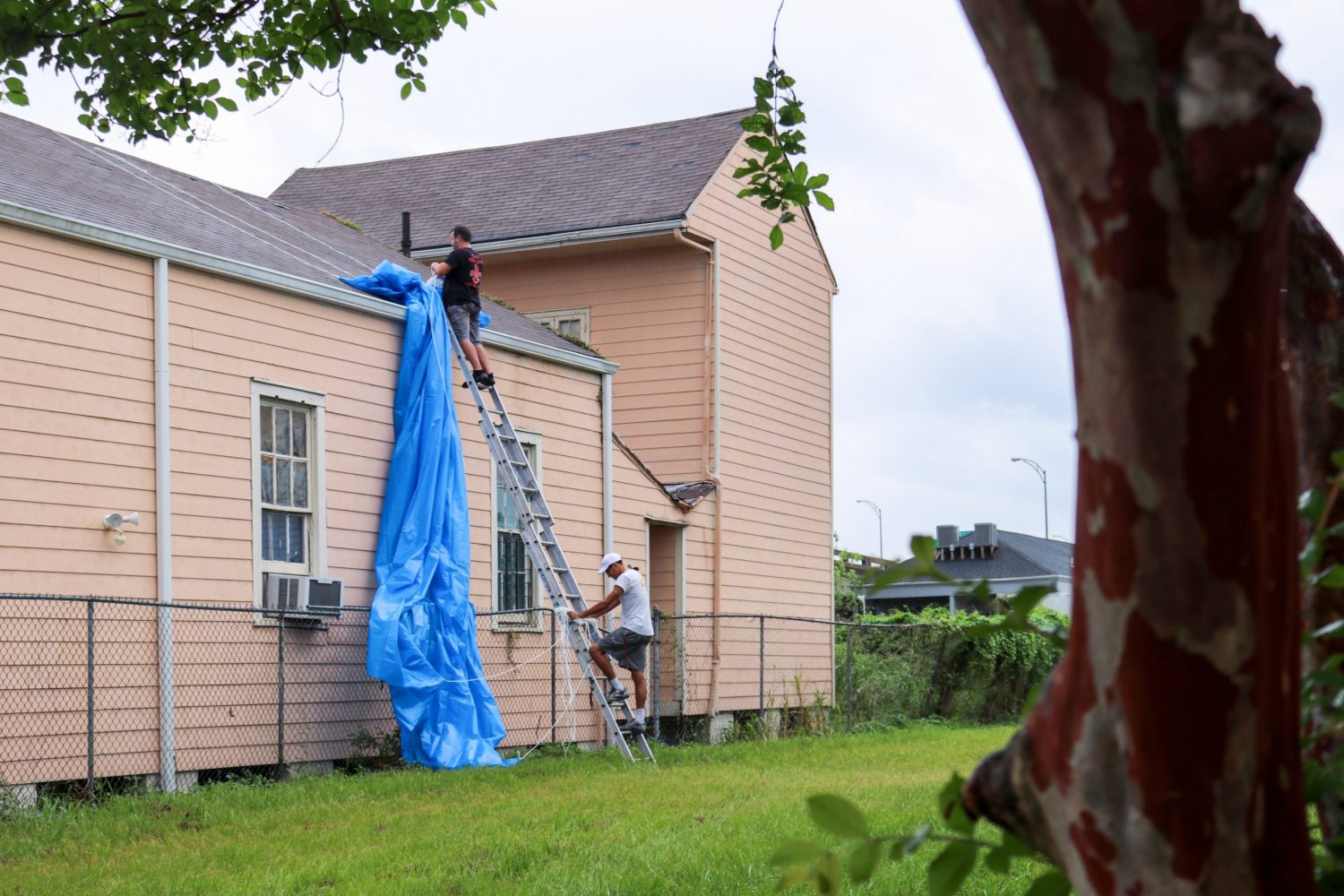As homeowners assess the damage from Hurricane Ida, it’s important to remember that many historic materials, such as plaster, are resilient to water damage and can (and should) be repaired. The first thing any homeowner should do is seal any point of water intrusion to stop further damage. First, let the area dry out by opening windows and doors. Use fans if power is available.
Plaster work is daunting to many homeowners, but full replacement is rarely needed. Due to the composition of the material, plaster was made to be durable, fire resistant, insulating and to reduce sound transmission. Before doing anything to wet or damaged plaster, it is important to allow for the plaster to dry out so an accurate inspection can be made. Here are a few tips when assessing plaster for water damage:
- Due to our humid climate, plaster may take extra time to dry out. You might consider removing a section of the baseboard or poke holes into the wall with a finishing nail to allow the wall cavity to ventilate properly.
- Once the plaster is dried out, you may see some staining or signs of efflorescence. This is normal. If the point of water intrusion has been sealed, these conditions should not progress any further.
- Severe sagging and large cracks in the plaster are signs that these areas may require replacement. Small damaged sections can be reattached to the lathe and/or patched as needed.
- You will want to find a masonry contractor skilled in working with lime plaster before making a final decision. Installing and repairing plaster is an artwork not every contractor is familiar with.
For more information on plaster, please watch our Maintain Right video below on the Truth About Plaster. Michael Shoriak of Cypress Building Conservation (@cypressbldg) will demystify how to maintain, repair and replace plaster and who to call when a professional is required.







